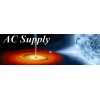If you have an interest in building model rockets, you might wonder about the different phases they go through during their flights. Understanding these phases can deepen your appreciation for the science behind these miniature marvels. Let’s explore the phases of model rocket flight, breaking down each step along the way.
Powered Flight
Powered flight is the first phase in a model rocket’s journey. This phase begins the moment the rocket’s engine ignites, propelling it into the sky. During powered flight, the rocket accelerates rapidly due to the thrust generated by the burning rocket motor. This phase typically lasts only a few seconds but is crucial for achieving the altitude necessary for the next phase.
Coasting Flight
Once the rocket’s engine burns out, it enters the coasting flight phase. During this phase, the rocket continues to ascend due to its momentum. Gravity begins to exert its influence, gradually slowing the rocket’s ascent until it reaches its maximum altitude. Coasting flight is a serene interlude between the intense burst of powered flight and the subsequent excitement of descent.
Ejection Charge
As the rocket reaches its peak altitude, it enters the ejection charge phase. This phase is where the rocket deploys its recovery system. A small explosive charge ejects the rocket’s nose cone, allowing the recovery system—usually a parachute—to deploy and slow the rocket’s descent. Timing is crucial here, as deploying the recovery system too early or too late can affect the rocket’s stability and descent trajectory.
Descent
With the recovery system deployed, the rocket enters the descent phase. Gravity takes over once again, pulling the rocket back toward the ground. Depending on wind conditions and the design of the rocket, the descent can be a gentle float or a more dramatic plummet. Regardless, this phase marks the beginning of the rocket’s journey back to Earth after its exhilarating ascent into the sky.
Recovery
The final phase of the model rocket’s flight is recovery. Once the rocket returns to Earth, it’s time to retrieve it and prepare for another launch. This phase involves locating the rocket, which may land some distance away from the launch site, and inspecting it for any damage. With luck, you’ll find the rocket in good condition, ready for you to reassemble it and try another launch.
Understanding the phases of model rocket flight adds a new dimension to the excitement of launching these fun educational tools. From the initial burst of powered flight to the gentle descent back to Earth, each phase plays a vital role in the rocket’s journey.
So, the next time you watch a model rocket take to the skies, you’ll have a deeper appreciation for the science behind the spectacle. And if you’re inspired to try it yourself, consider purchasing Estes model rocket kits from AC Supply for your own high-flying adventures.


